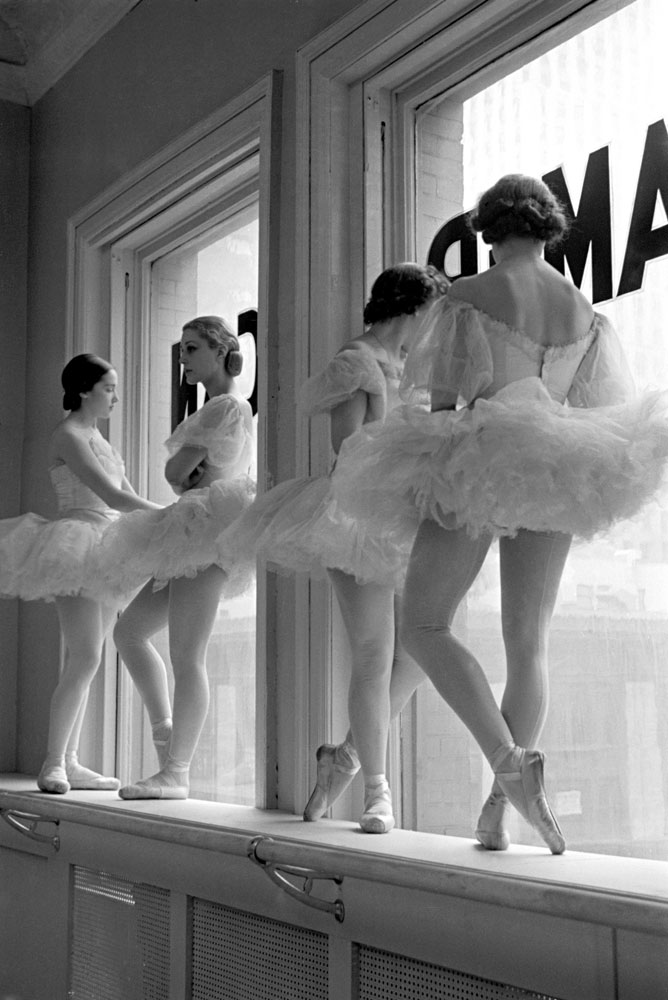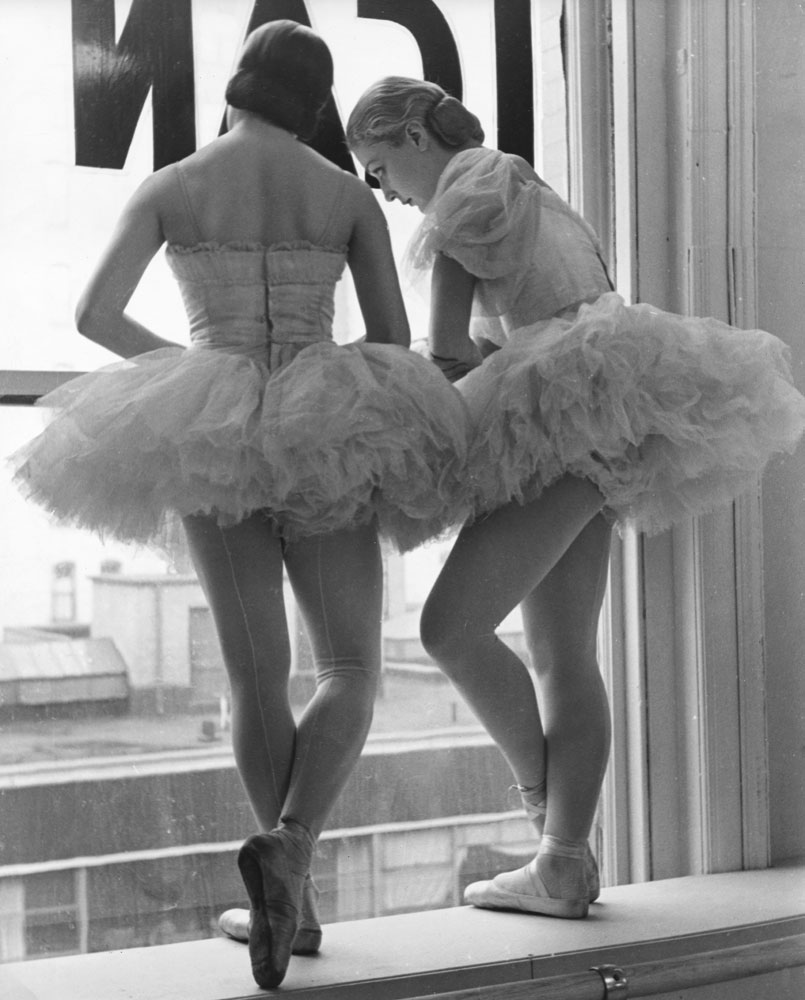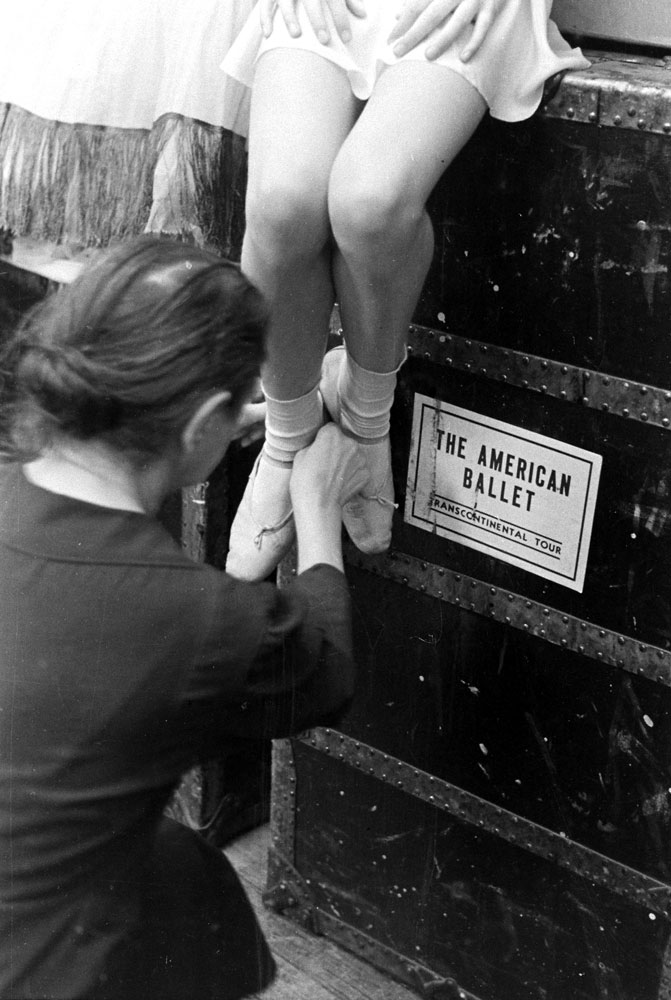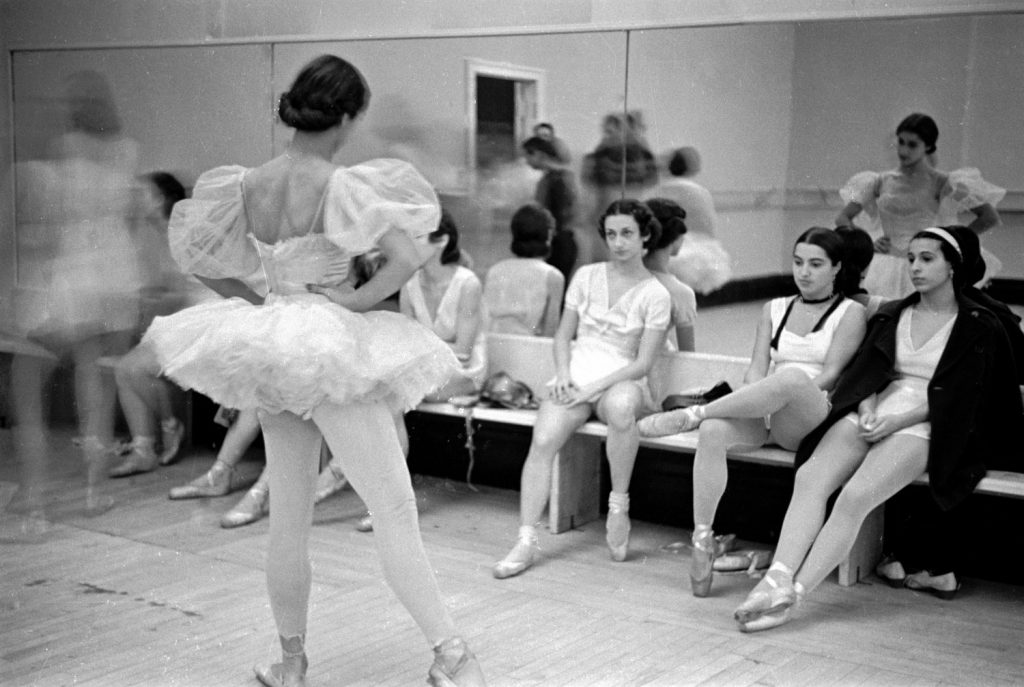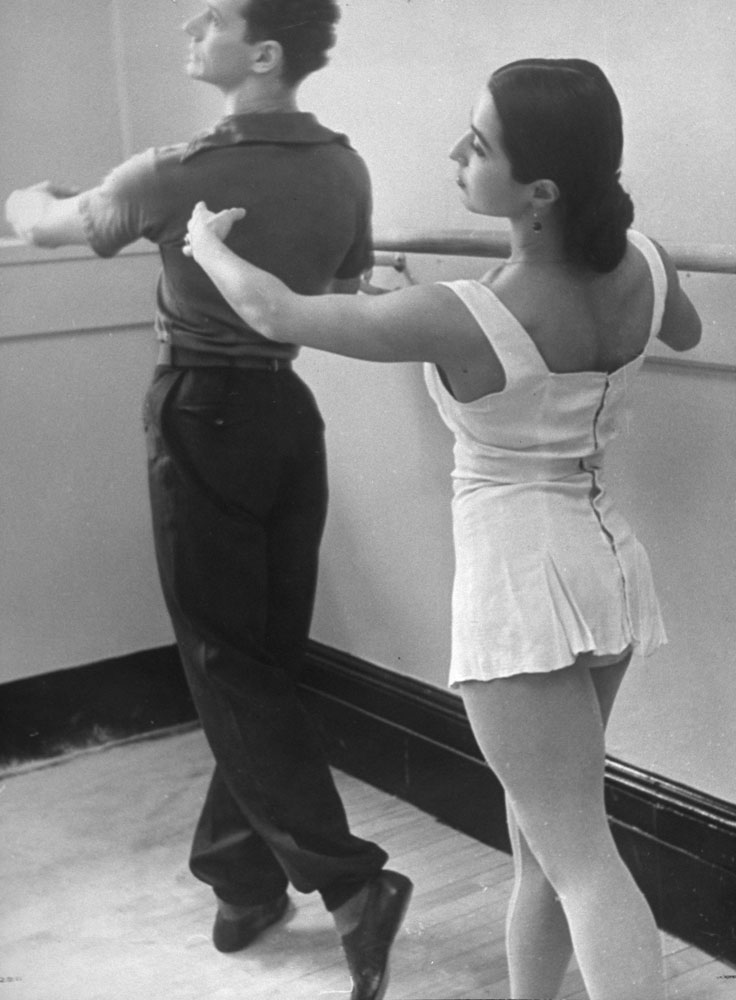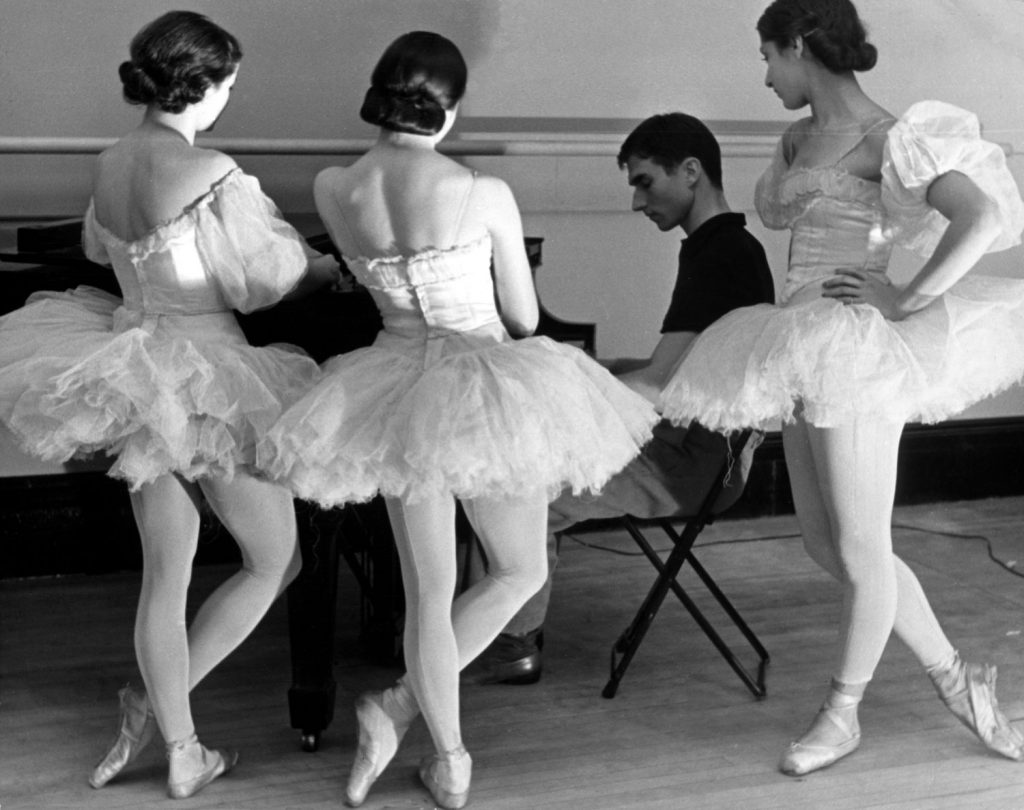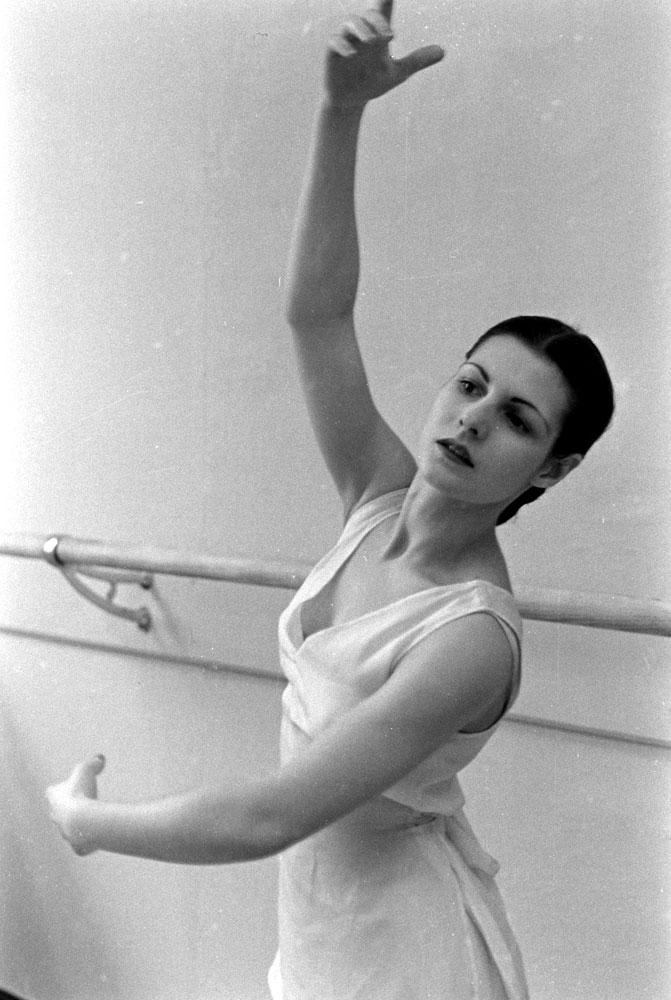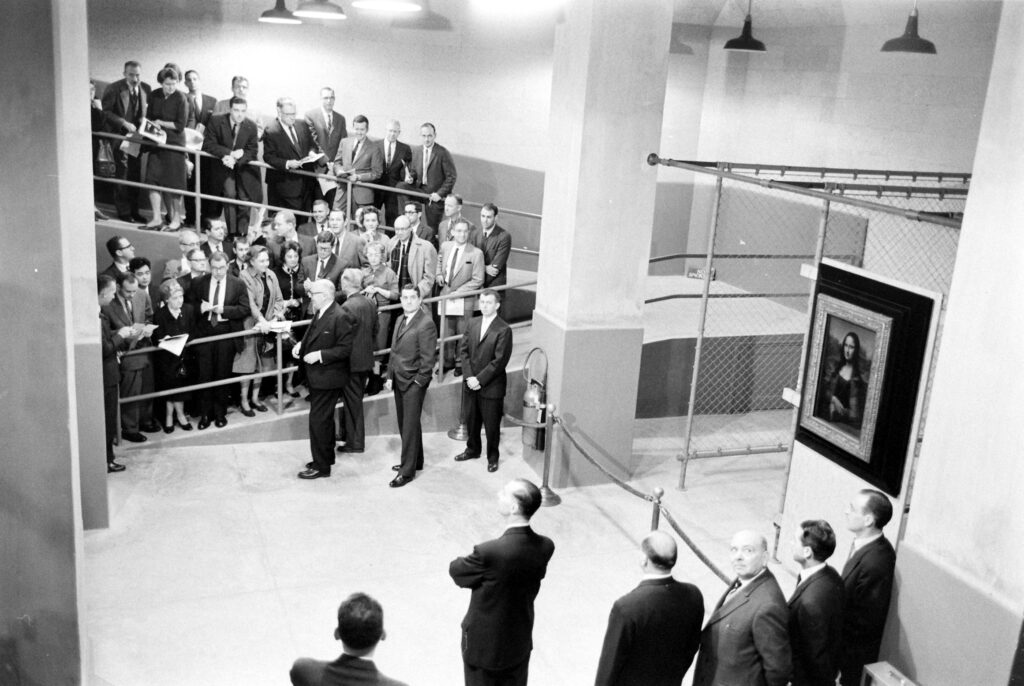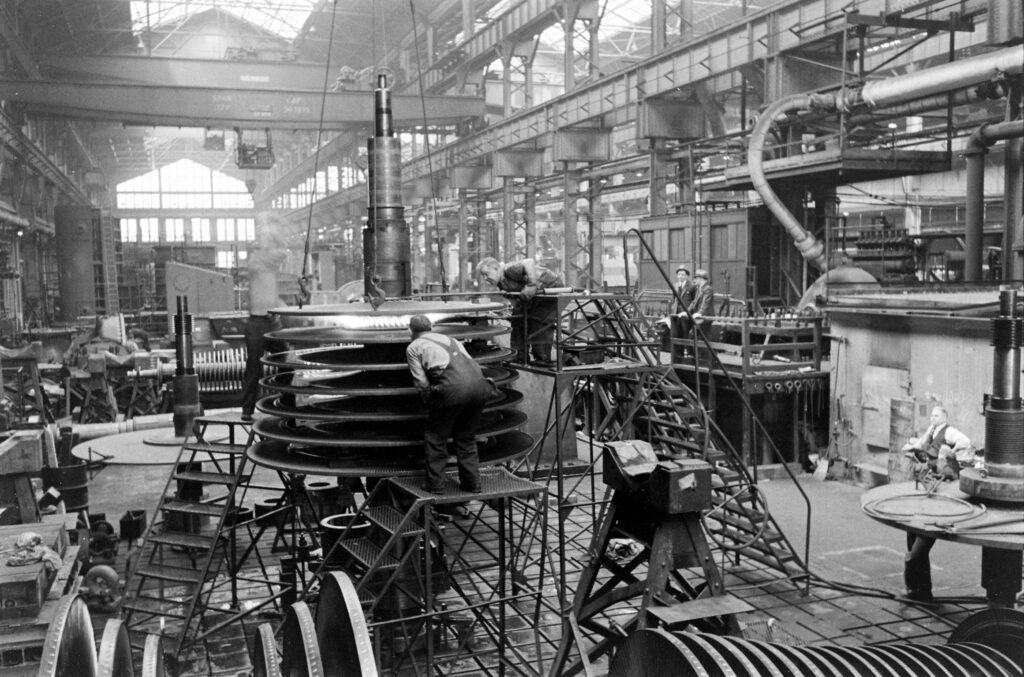Written By: Ben Cosgrove
Few things, after nearly a century, manage to stay the same. But any dancer and specifically, any ballet dancer perusing Alfred Eisenstaedt‘s dance photographs that ran in the December 28, 1936, issue of LIFE magazine will recognize the shoe fittings, the repetitive warm-ups and the seemingly interminable “waiting around” that marked rehearsals at New York’s School of American Ballet more than 75 years ago. The intimate pictures in this gallery celebrate the many ways in which ballet, as an art form, has resisted change: a plié is ever a plié, and a dancer should still turn the legs out from the hips, rather than from the knees. One of the photos, of dancers in the window, is in fact one of the best-sellers in the LIFE photo store.
Yet ballet is by no means immune to some forms of transformation: the forces that quietly mold other facets of modern culture have also marked the classical dance form. Renowned companies like the New York City Ballet avidly promote their repertoire on Facebook and Twitter. Artistic directors turn to psychedelic backdrop projections and costumes to bring balletic creations to life. And no longer is the “story ballet” think Cinderella and Swan Lake the go-to anchor for choreographers: thanks in large part to the great Russian-born 20th century choreographer George Balanchine, abstract, non-linear works have successfully embedded themselves in the culture’s idea of what ballet can be.
Dancers have changed, too, of course. “The technical training across cultures and facility that dancers have now is so much greater,” Princeton Lecturer in Dance and longtime member of the Mark Morris Dance Group Tina Fehlandt told LIFE.com. Higher expectations accompany the rigorous preparation: flexibility is boundless, and Odile’s thirty-two fouettés standard fare. Dancers are often strikingly thin not exempt, it would seem, from societal assumptions about weight. And ballet, like so many practices built on aesthetics, is more than ever a province for the very young.
“It’s important not to judge [Eisenstaedt’s] photos and the dancers in them by the technical standards of today,” Fehlandt said. “I love looking at old photos for that very reason you can compare and contrast.”
That is exactly what we can do with these photos from the magazine’s sixth issue ever: examine the directions in which ballet has evolved, and where it has stayed put. The pictures certainly reveal differences: the dancers are, for the most part, bare-legged (today most wear nylon tights) and their bodies are curvier that today’s ballet norm. But the routines and rituals are strikingly familiar, as is LIFE’s assertion that “ballet dancing is a hard, steady, painstaking job.” As art around the world including ballet seizes on new possibilities in multimedia, social media, advanced technology and new forms of collaboration, it’s nice to know that, at the most elemental level, some things really don’t change.
Tara Thean is a freelance writer and graduate student in biological sciences at Cambridge University. Follow her on Twitter @tarathean.

The School of American ballet, New York, 1936.
Alfred Eisenstaedt/Life Pictures/Shutterstock

A group of dancers pointed their toes in order to stretch their leg muscles.
Alfred Eisenstaedt/Life Pictures/Shutterstock

School of the American Ballet, New York, 1936.
Alfred Eisenstaedt/Life Pictures/Shutterstock

These ballerinas were part of the American Ballet corps that served as dancers in Metropolitan Opera productions.
Alfred Eisenstaedt/Life Pictures/Shutterstock

School of the American Ballet, New York, 1936.
Alfred Eisenstaedt/Life Pictures/Shutterstock

School of the American Ballet, New York, 1936.
Alfred Eisenstaedt/Life Pictures/Shutterstock

School of the American Ballet, New York, 1936.
Alfred Eisenstaedt/Life Pictures/Shutterstock

School of the American Ballet, New York, 1936
Alfred Eisenstaedt/Life Pictures/Shutterstock

School of the American Ballet, New York, 1936
Alfred Eisenstaedt/Life Pictures/Shutterstock

These ballet dancers, costumed for Mozart pieces arranged by Tchaikovsky, were listening to the music before starting to rehearse.
Alfred Eisenstaedt/Life Pictures/Shutterstock

School of the American Ballet, New York, 1936.
Alfred Eisenstaedt/Life Pictures/Shutterstock

School of the American Ballet, New York, 1936.
Alfred Eisenstaedt/Life Pictures/Shutterstock

